30+ Video Marketing Tips: The Complete Guide
Video content has become an essential part of any modern marketing strategy. With platforms like YouTube and the rise of video across social media, video marketing presents a significant opportunity for brands looking to engage their target audience. However, creating compelling marketing videos takes skill and planning. This comprehensive guide covers everything you need to know to succeed with video marketing tips in 2024.
Table of Contents
Why Video Marketing Matters
Video dominates internet traffic today. Consider these video marketing statistics:
- 90% of users say videos help them make buying decisions
- 64% of customers are more likely to buy a product online after watching a video about it
- Companies using video enjoy 41% more web traffic from search results than non-video users.
If you're not incorporating video into your digital marketing efforts, you're missing significant opportunities to connect with customers and drive conversions.
Key Benefits of Video Marketing
So why does video marketing work so well? There are several key reasons:
- Videos are engaging – Viewers pay more attention and retain more information from videos than other types of content.
- Videos build trust – Putting a human face behind your brand helps customers see you as trustworthy.
- Videos convert – Product demos, testimonials, and more can nudge viewers further down the sales funnel.
- Videos optimised for search – Search engines prefer pages with relevant video content.
With numbers like these, no brand can afford to ignore video marketing today. Keep reading to learn tips for creating videos that deliver results.
Getting Started With Video Content Marketing
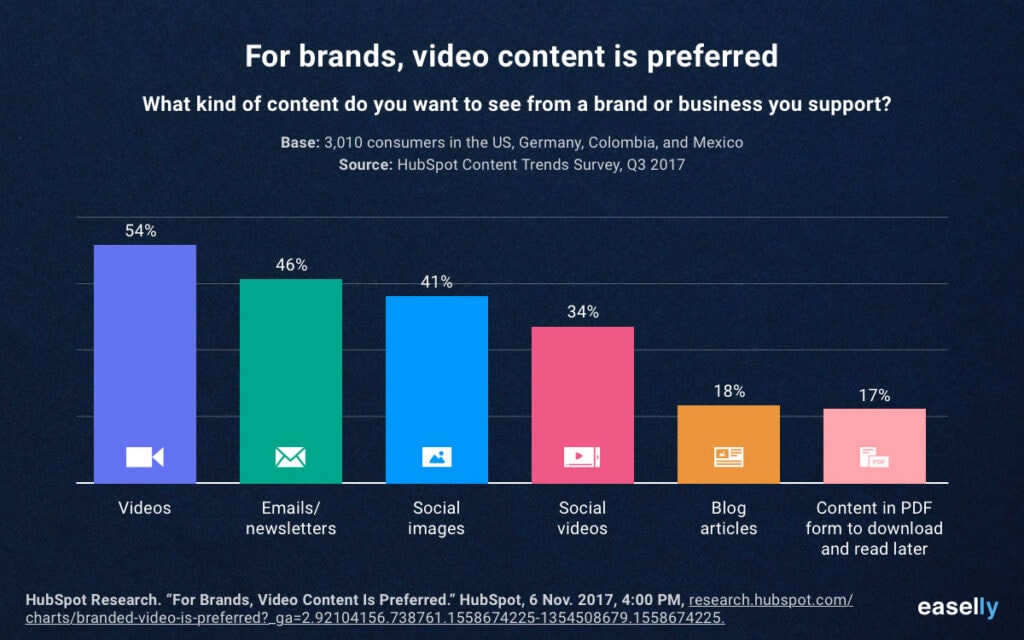
Jumping into video marketing can feel overwhelming. But getting started only requires three key steps:
1. Set Goals for Your Video Campaign
Be clear from the outset what you want your videos to achieve. Common video marketing goals include:
- Increase brand awareness or favorability
- Drive web traffic and reduce bounce rates
- Convert viewers into leads or sales
- Engage social media followers
Tracking goals will help you measure video campaign success.
2. Understand Your Target Audience
Get very specific in defining who your videos aim to reach. Important audience insights include:
- Demographic details like age, location, gender
- Values, interests and pain points
- Stage in the buyer's journey
- Objections and questions they have
Tailor content accordingly so you can engage this audience.
3. Choose Video Types and Topics
With goals and audience insights, determine what videos will serve both best. Video types might include:
Popular marketing video types:
- Product demos
- Customer testimonials
- Behind-the-scenes company culture videos
- Educational how-to videos
- FAQ videos
- Event recordings
- Animated explainer videos
Match topics to each stage of your sales funnel while keeping audience needs in mind.
Now, let's look at best practices across key stages of the video marketing process – from pre-production planning to optimisation post-launch.
Video Marketing Production Tips
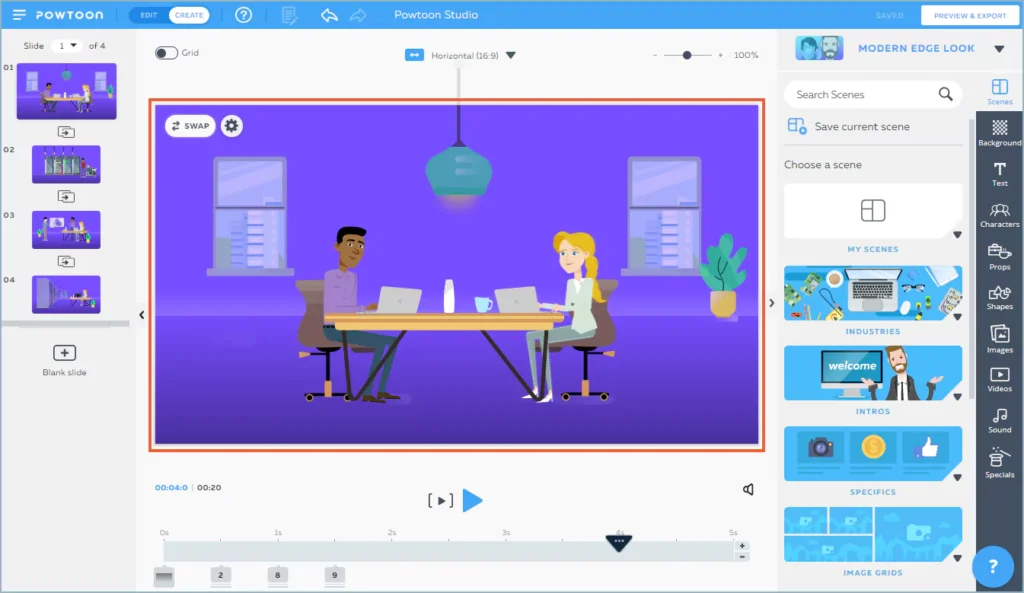
Creating compelling marketing videos requires both creativity and strategy. Use these pre-production tips to set your filming efforts up for success:
Script Writing Best Practices
- Have a clear objective – What should viewers think, feel or do after watching?
- Highlight benefits – Focus more on how your product or service solves problems vs. features.
- Lead with crucial points – Front-load videos with the most critical info to capture attention quickly.
- Keep it simple – Avoid jargon, and keep sentences and paragraphs short.
- Use visual language – Phrases like “imagine,” “see,” and “look” help viewers visualise what you say.
- Employ hooks – Ask questions, use humour, surprise viewers – and give them reasons to keep watching.
- Close with a CTA – End each video with a solid call to action, driving viewers to engage further.
Production Checklist
- Quality camera – Invest in HD resolution equipment for professional results
- Image composition – Frame shots using the rule of thirds for balanced scenes
- Get good light – Proper lighting prevents shadows or overexposure
- Clear audio – Use lavalier mics or recording equipment that ensures voices can be heard
- B-roll and visuals – Cut between speakers and relevant images to reinforce key points and keep viewers engaged
- Graphics and text – Insert occasional on-screen text, stats, graphics and branding
- Smooth editing – Make cuts timely while removing unwanted pauses or filler words
- Length – Usually between 30 seconds to 2 minutes maximum for marketing videos
Handling these production details upfront results in polished, compelling video content.
Video Marketing Distribution Tips
You’ve made a phenomenal video. Now it’s time to get it in front of the audiences that matter most. Use these best practices to distribute videos successfully:
Upload to Multiple Platforms
Post videos across the major platforms your audience uses, such as:
- YouTube – Over 2 billion logged-in monthly users make this the #1 platform for video hosting and sharing
- Social media – Native video performs well on Facebook, Instagram, LinkedIn, TikTok and Twitter
- Website and blog – Include videos in landing pages, product pages and relevant blog posts to engage website visitors
- Email marketing – Add videos to email campaigns or send video-specific emails to subscribers
Choosing channels that align closest to your audience goals will expand your reach.
Optimise Descriptions
Validating videos with optimised titles, tags, and descriptions helps get them found:
- Compelling titles – Get clicks with reader-focused titles using powerful words viewers care about
- Relevant tags – Include keywords and phrases your audience searches that relate to the content
- Video chapter timestamps – Let viewers skip ahead to different sections
- Links and CTAs – Drive viewers to take action via links to your website, offers, etc.
- Engaging descriptions – Use questions and descriptive snippets to entice viewers to watch
Completing all metadata thoroughly gives videos a better chance of being discovered and converting viewers.
Amplify Further With Paid Ads
Beyond organic reach from shares and searches, dedicate a budget to promote videos using paid advertising:
- YouTube video discovery ads – Appear beside relevant YouTube videos
- Social ad campaigns – Raise awareness of videos with social platforms’ sophisticated targeting capabilities
- Retargeting ads – Chase viewers who have previously interacted with your videos or site
- Content discovery networks – third-party ad networks like Taboola and Outbrain showcase your videos to interested audiences across their extensive publisher network
Putting advertising dollars behind videos helps guarantee they end up on the correct screens.
Analyse Performance
It’s critical to see what’s working when distributing marketing videos. Key metrics to track include:
- Clickthrough rates
- Completion rates
- Engagement metrics (likes, shares, comments)
- Traffic referred to your site
- Conversions driven
Monitoring return on investment will clarify what’s resonating so you can double down on top-performing video content.
Optimising Your YouTube Channel
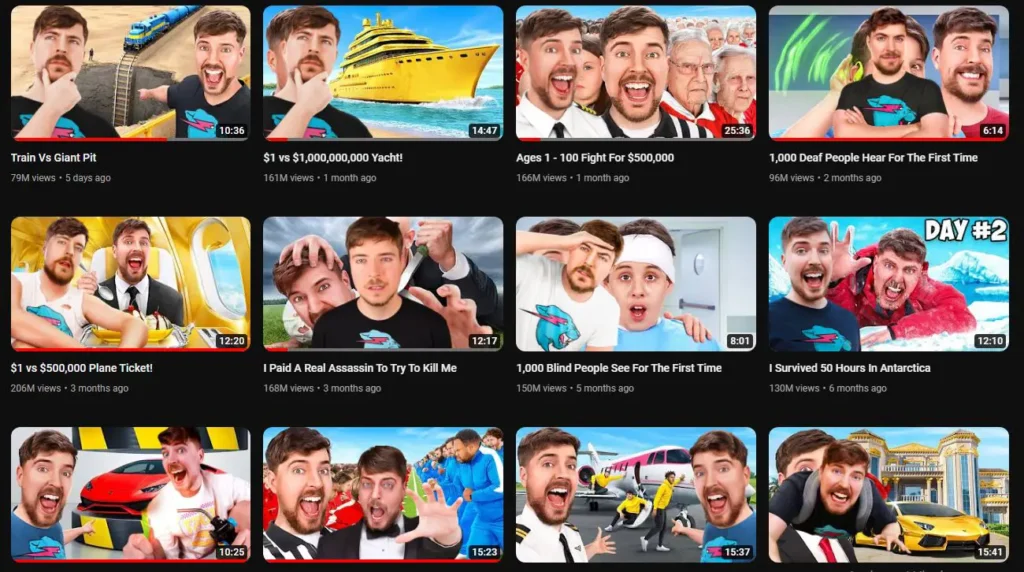
With over 2.5 billion monthly users, YouTube offers an expansive video-sharing platform. But simply uploading videos isn’t enough. Brands should also optimise the setup of their YouTube channel itself to unlock more video marketing success.
Complete Channel Customisation
Make sure to utilise all of YouTube’s branding and customisation capabilities fully:
- Cover photo – Allows channels to showcase a brand image or campaign visual
- Profile picture – Displays a brand logo or icon consistently
- Trailers – Short teasers auto-play when visitors land on your channel
- Sections – Curate content into sections or playlists around topics/series
- Channel navigation links – Drive viewers to sign up or shop from videos
Completing all features makes visiting your YouTube channel a polished, on-brand experience.
Include Robust Channel Descriptions
Well-crafted channel descriptions establish authority and trust:
- Summary – Explain the topics your channel will cover and the value it offers audiences
- Branding – Feature a brand overview sharing history, products/services and differentiators
- Value proposition – Summarise why viewers should subscribe in a compelling manner
- Playlists – Link out to different video playlists to facilitate content discovery
- Contact info – Provide links so viewers can follow or learn more about your brand
Descriptions should prove to site visitors why they must stick around and subscribe.
Turn On Affiliate and Merchandising
Additional money-making affiliate and merchandising options help monetise YouTube followings:
- Affiliate linking – Directs viewers to third-party product or service sites you endorse for commission off resulting purchases
- Product sales – Sell your own digital or physical products right through videos
- Channel memberships – Offer exclusive perks like emojis or badges to paid monthly subscribers
- Merchandise shelves – Highlight branded swag viewers can buy featured under videos
Activating these in YouTube channel settings makes it simple to generate revenue from engaged audiences.
Crafting Compelling Marketing Videos

Let’s examine tactics when creating standout marketing videos that engage viewers.
Product Demo Videos
Demo videos present branded products in action:
- Keep it short – Get right to the point fast, focusing on one primary feature/benefit
- Show product versatility – Demonstrate usage across multiple contexts/customers
- Lead with the wow – Hook viewers featuring your product’s most exciting/innovative capabilities
- Enlist influencers – Recruit relevant personalities trusted by your niche to demo the product
- Compare with competitors – Distinguish why your solution outshines others
Savvy product positioning through demos helps drive purchasing intent.
Customer Testimonial Videos
Satisfied customer testimonials offer powerful social proof:
- Highlight pain points – Have customers explain key challenges your brand solved for them
- Emphasise outcomes – Quantify savings, increased profits or other concrete results achieved working with you
- Keep it authentic – Ask open-ended questions and avoid overly scripted sales pitches
- Industry variety – Collect stories across customer size, vertical, and persona to showcase broad applicability
- Add B-roll – Supplement talking heads with images of products or customers in their environment
Safeguard credibility, including client videos directly endorsing your solution.
Brand Story Videos
Origin stories and brand histories make companies memorable:
- Start with purpose – What pressing customer problem initially prompted your founders to launch?
- Share humble beginnings – Highlight early bootstrap days when the business was just a bold idea
- Showcase evolution – Trace growth covering new products, employees, offices, achievements
- Close with vision – Paint an inspirational picture of your future company aspirations
Blending humble roots with ambitious yearnings makes brands relatable and aspirational.
Behind-the-Scenes Videos
Pulling back the curtain generates goodwill:
- Spotlight company culture – Feature glimpses of the people, personality, values and camaraderie behind your brand
- Profile employee stories – Capture team members passionately explaining what they do
- Show off facilities – Offer virtual tours of office spaces or factories emphasising state-of-the-art tools and practices
- Reveal R&D innovations – Tease early peeks at the following cutting-edge products under development
These inside looks make companies appear more transparent and accessible.
FAQ Videos
Addressing common questions builds trust:
- Identify pain points – Study customer conversations to uncover the most significant issues or uncertainties
- Speak conversationally – Answer sincerely as you would if queries came from a friend
- Overlay graphics – Display text on-screen reinforcing complex terms or numbers cited
- Crosslink playlists- Remind viewers of other playlists with related FAQ video answers
Thorough explanations give customers the confidence to buy from you.
Event Recording Videos
Conference keynotes make evergreen content:
- Promote pre-event – Upload event trailers in advance of driving registration
- Share presentations – Post slides to reinforce speaker points
- Chop into segments – Break speeches into focused excerpts around critical themes
- Supply metadata – Include chapter timestamps and speaker IDs
- Curate playlists – Organise sessions into tracks like greatest hits, panels, etc.
- Blog recaps – Write summaries directing attention to the best video clips
Repurposing events into videos helps continue conversations with digital audiences.
Video Marketing Measurement Tips
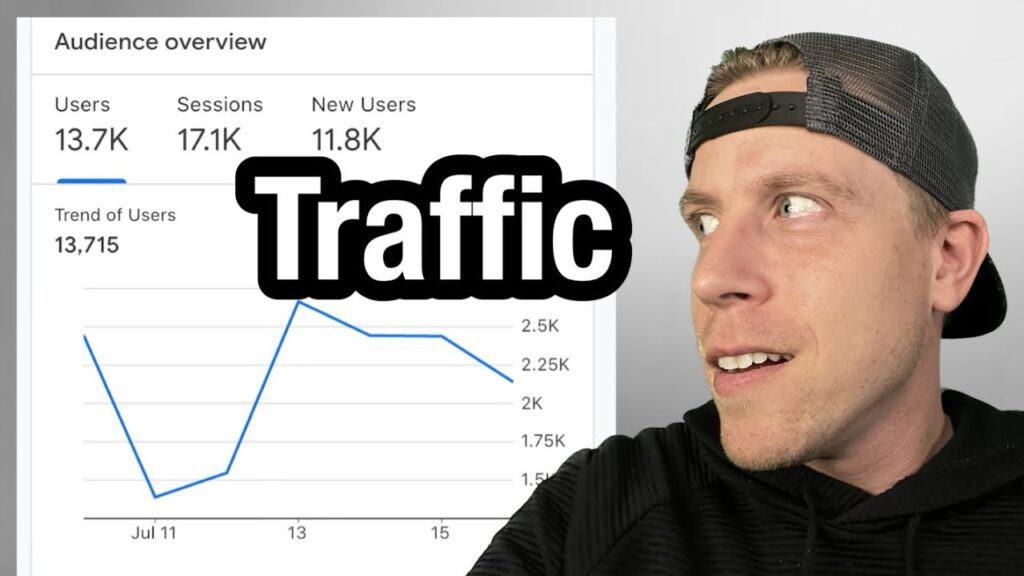
The most brilliant marketing video strategy still requires testing and optimisation. Use these analytics practices to refine your video approach over time for superior performance:
Keep Viewer Attention
Viewer attention assesses if you engage audiences adequately from start to finish:
- Attention graph – Shows second-by-second peaks where people pay attention and plummet when they drop off
- Average view duration – Measures typical watch time from start to finish
- Audience retention – Calculates per cent still viewing at video 25%, 50%, 75% completion milestones
Evaluating attention metrics flags where videos may lose people so you can refine content.
Track Influential Discovery Sources
Determine the best channels driving viewership:
- YouTube search
- YouTube suggested videos
- YouTube browse features
- External website referrals
- Social media posts
- Paid advertisements
Doubling down on pathways sending significant traffic allows you to reach more qualified viewers.
Assess Audience Retention Between Videos
Do viewers binge multiple videos or leave your channel?
- Traffic source analysis – Shows viewer loyalty breakdown by category like YouTube search, channel pages, playlists, etc.
- Audience retention report – Displays per cent of viewers watching another video on your channel after the current video ends
High audience retention across videos signals you likely have loyal, engaged subscribers versus one-off visitors.
Connect Views to Conversions
Tie video metrics to business results like:
- Website traffic – Did view count or shares drive traffic to your site?
- Brand interest – Are positive brand sentiment or followers up on social media?
- Leads – Can you track demo requests or newsletter signups to video viewership?
- Revenue – Did particular videos produce a sales lift?
Quantifying real business value achieved from videos justifies further investment.
Optimise Based on Insights
Learn from analytics to guide video creation decisions:
- Double down on best performers – Expand production of popular topics and formats
- Retire poor performers – Allocate less budget/resources to content not resonating
- Improve weak points – Fix issues losing attention according to retention data
- Promote conversions – Optimise end cards and CTAs to increase desired actions
Continually improving based on data feedback guarantees long-term video success.
Video Marketing Trends and Innovations
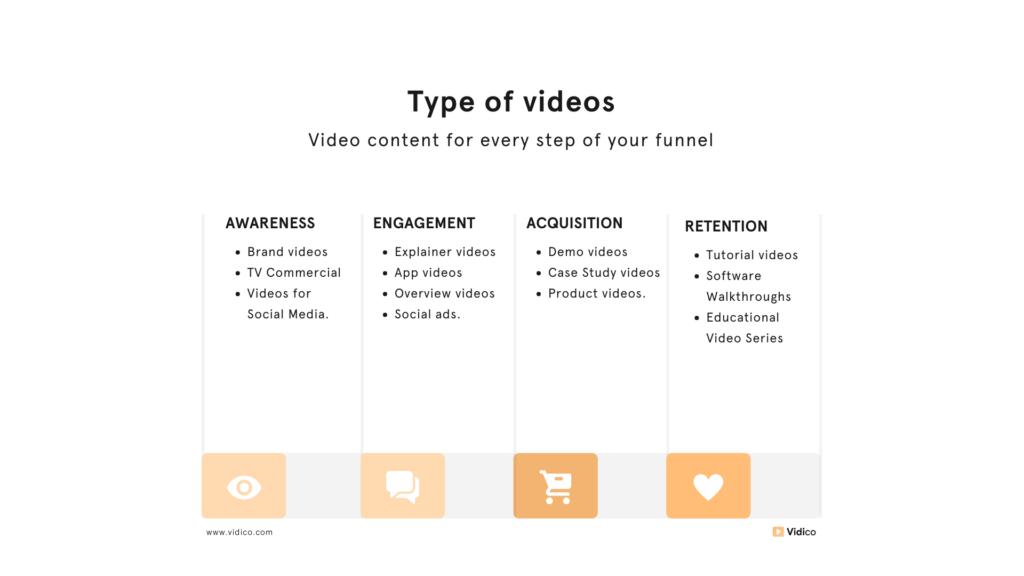
Video marketing continues advancing rapidly. Stay ahead, observing these rising video spending trends and innovations:
Rising Adoption Across Generations
Younger users still watch more videos daily, but adoption is growing fastest among older groups, as the chart shows:
| Generation | Change in Average Daily Videos Watched |
| Gen Z (18-24 years old) | +31% |
| Millennials (25-36 years old) | +49% |
| Gen X (37-56 years old) | +46% |
| Boomers (57-64 years old) | +62% |
Brands finding success on platforms like TikTok with Gen Z and Millennials should expand mature adult targeting on YouTube and Facebook.
Live Video Streaming Taking Over
Live video will dominate through formats like:
- Product launches – Build anticipation debuting items in real-time broadcasts
- Events – Extend reach by hosting award shows, conferences and meetings using interactive live streams
- Influencer takeovers – Let famous personalities broadcast using your channel/profile for a day
The future favours brands bold enough to test innovative live formats.
Video Interactivity Expanding
Look for more interactive video features like:
- Polls and quizzes – Solicit viewer opinions or test knowledge by embedding questions in the content
- Shoppable capabilities – Enable instant purchasing of products featured without leaving the video
- AR effects – Allow consumers to try on makeup or test products at home digitally
Widening opportunities for viewers to engage beyond passive watching makes videos more alluring.
Short-Form Video Content Surging
Brevity becomes more desirable with mobile usage:
- Snackable videos – Capture attention quickly with 60-90 second videos tackling a single quick tip or thought
- Short-form series – Present more significant stories in 5-10 minute episodes like a mini-show
- TikTok-style clips – Entertain and inform by harnessing tight shots, music, effects
Trimming length satisfies dwindling attention spans but still educates audiences.
Visual Search Unlocks New Possibilities
AI-driven video analysis provides rich insights like:
- Automated tagging – Machine learning assigns scene tags, labels objects, detects emotions, and more to interpret video content
- Facial analysis – Identifies viewers in videos to quantify emotional reactions or demographics
- Speech-to-text – Automatically transcribes dialogue for deeper analysis of topics discussed and sentiment
- Performance prediction – Forecasts viewership metrics to estimate video success pre-launch
Leveraging smart tech to unlock data within videos lifts optimisation to new levels.
Video Marketing Budget and Resourcing Tips

Determining appropriate investment into video content aids decision-making:
Video Production Cost Breakdown
Typical marketing video production expenses include:
- Scriptwriting: $200-$500 per video
- Filming/editing: $1,000-$5,000 per video
- Animation: $3,000-$10,000 per minute of finished footage
- Hosting fees: $99-$399 per year for abasic YouTube channel
Working with an agency usually increases costs but also guarantees quality. Do-it-yourself videos lower spending yet still require proper tools and skill. Set realistic budgets, aligning video strategy with resources available.
In-House vs Outsourced Production
Weigh cost/control tradeoffs:
- In-house pros – More creative control, own all content, no vendor fees beyond equipment, builds internal skills
- In-house cons – Requires significant ramp-up time, likelihood of quality issues, content bottlenecks
- Outsourced pros – Taps proven industry expertise, bandwidth flexible to initiative needs
- Outsourced cons – Forfeits creative control, adds vendor costs and management time
As programs mature, ambition may necessitate starting in-house video teams despite the initial complexity.
Staffing a Video Team
If launching internal video operations, key production roles needed include:
- Producers – Manage initiatives end-to-end from conception through talent booking, scripting, scheduling, budgeting and analysis
- Videographers – Professionally film footage, selecting equipment, angles, and lighting for the best quality
- Editors – Combine b-roll with graphics, titles, and effects using editing programs into impactful videos
- Motion graphic designers – Build dynamic animated sequences that generate excitement and clarify complex topics
- Content strategists – Ensure videos map to buyer journey campaigns and amplify the broader content ecosystem
Having cross-discipline expertise avoids production bottlenecks as libraries scale.
Video Marketing Legal and Ethical Guidelines
While video provides exciting communication potential, marketers must also consider legal and ethical considerations.
Respecting Privacy and Permissions
When filming customers or employees, transparency rules:
- Model releases – Attain consent forms from anyone recognisable on camera approving usage
- Transparent filming – Disclose when recording is happening, informing participants of future video plans
Upholding privacy builds trust that you’ll represent brand partners appropriately.
Honouring Copyright Laws
Beware Legal issues adapting the third-party film, music or images:
- Licensing content – Seek permission before incorporating others’ copyright-protected work into your videos
- Royalty-free alternatives – Use open-source content without rights constraints
- Original productions – Develop custom footage and music from scratch, circumventing any licensing needs
While licensing speeds production, the safer path minimises copyright infringement risk.
Ensuring Representation and Inclusion
Diverse perspectives should be welcomed:
- Intentional casting – Seek people of different ethnicities, abilities, gender identities, etc., as talent
- Respect Cultural Depictions – Avoid reinforcing harmful stereotypes or tropes for any group.
Videos present a forum to unify rather than divide customer communities.
Video Marketing Tips FAQs
Do you still have some lingering questions about video marketing? Here are answers to frequent queries:
What types of videos perform best?
Product demos – 94% helpfulness rating
Step-by-step tutorials – 93% helpfulness rating
Customer Testimonials – 89% helpfulness rating
How can I make entertaining videos on dry topics?
Use engaging host personalities
Incorporate strong visuals like animation
Leverage humour when appropriate
Pose questions for viewers to answer.
What makes a compelling thumbnail?
Faces – Expressive facial photos
Contrast – Bold colours that stand out
Text – Keyword-rich titles readers care about
Recognisability – Branding people identify
Simplicity – Clean, uncluttered designs
Should all videos be closed-captioned?
Absolutely – captions expand access for those with hearing challenges. Plus, they:
Increase visibility on silent platforms like Facebook or LinkedIn
Improve SEO since search engines read text elements
Allow video consumption without sound in public spaces.
What makes a compelling video CTA?
Display 5-10 seconds before the end, allowing time for viewers to act
Use simple imperative language like “Sign up now.”
Contains links directly to a destination, like a squeeze page
Offer value for taking action like an exclusive discount or content
Conclusion & Next Steps
I hope this comprehensive guide clarifies the best practices to succeed with video marketing. To recap, be sure to:
- Set clear goals and understand your target viewer
- Distribute videos widely, promoting with ads
- Perfect technical elements like scripting and editing
- Track analytics closely to optimise efforts
- Stay on top of video innovations aligned with your strategy
The marketing video landscape will only grow more competitive. But brands putting these video marketing tips into practice position themselves to stand out.
For additional help executing video campaigns, explore working with specialised video production partners. Their end-to-end services guarantee your videos make maximum impact. Contact a provider now to strategise!
